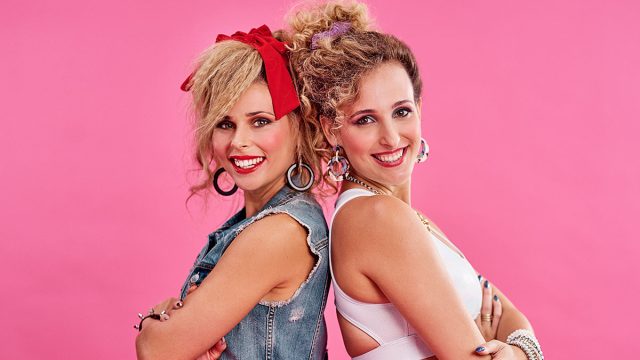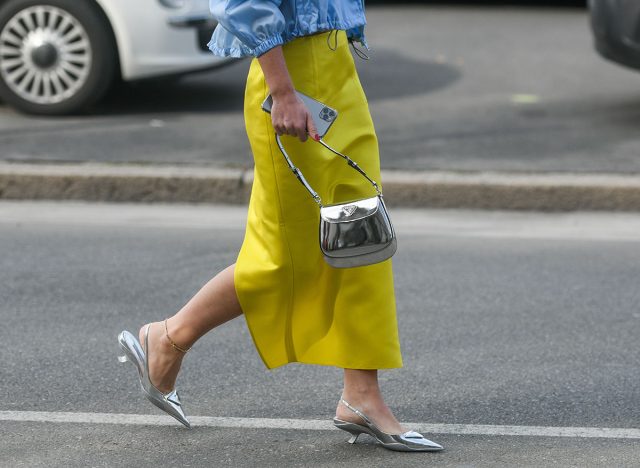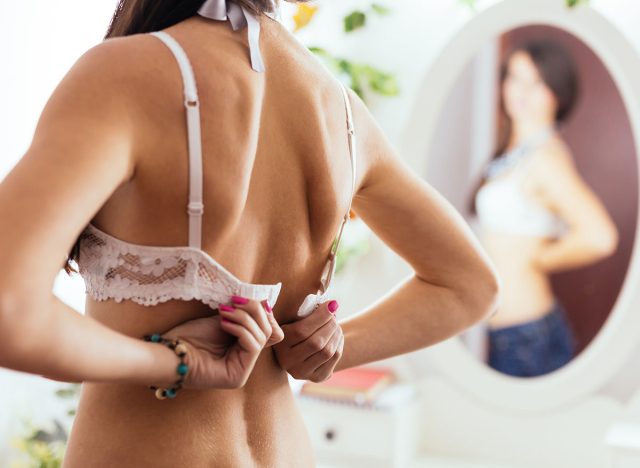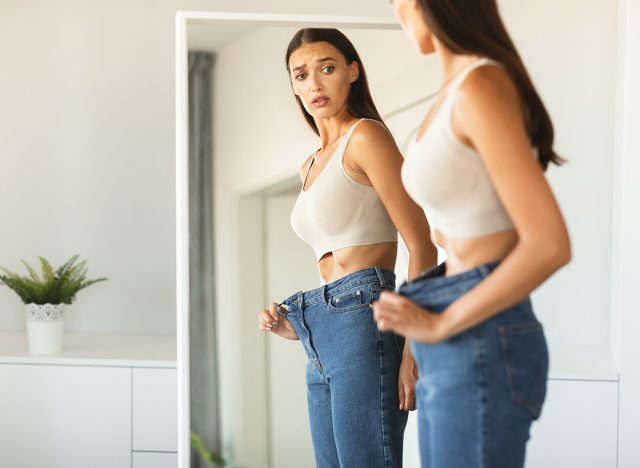5 Wardrobe Mistakes Adding Years to Your Appearance

Is your wardrobe making you look older? It can be easy to fall into the trap of just wearing the same style of clothing despite the natural lifestyle and physical changes that come with every passing year. If you still have a spring in your step but feel out of the loop, fashion-wise, don't panic—there are many stylists and experts to set you on the right path. Here are five common wardrobe mistakes adding years to your appearance.
Matchy Matchy

Having your clothing and accessories match can be very aging. "This one can be hard to let go of, but I promise you, it is no longer necessary to match your shoes to your handbag, or wear a set of coordinating earrings and a necklace," celebrity stylist Miranda Holder tells the Daily Mail. "The minute you do, you are putting yourself in the style territory of our late, great Her Majesty Queen Elizabeth II, and whilst our beloved sovereign was an enduring fashion icon, the roots of her image were planted firmly in her fashion heydays of the 1950s."
The Wrong-Size Bra

Wearing the correct underwear is crucial, style experts say. "Believe it or not, the right-size bra can instantly make you look taller, thinner, and more youthful," says Beth Djalali on Style At a Certain Age. "But the wrong-size bra makes you look shorter, older, and heavier. That's how vital this undergarment truly is."
RELATED: Tone Sagging Arms in 2 Weeks With These 5 Exercises
Oversized Clothes

Wearing the right size is important—baggy clothes can end up looking frumpy, which can make you look older. "Choose pieces that are loose but not overwhelming. Try wearing oversized just on one half of your body at a time," says Jennifer Connelly on A Well Styled Life. "Voluminous tunics paired with oversized pants can make you look like you're trying to hide something.
Stuck In the Past

If you're still wearing the same clothes from decades ago, it might be time to revamp your wardrobe. "While there is absolutely nothing wrong with a look inspired by the 70's, 60's or even 80s – fashion is after all circular, and even the diciest of trends can come back around like a bad taste boomerang – sticking resolutely to a fashion formula that belongs firmly in the past really isn't going to do you any favors," Holder tells the Daily Mail. "Wearing solely styles of yesteryear whilst resolutely ignoring all that is current is a fast way to the fashion graveyard."
Related: This Is Exactly How to Lose Body Fat This Year
Too Much Dark Clothing

Too much dark clothing can make you look older, experts say. "[A] common style mistake for women over 40 is wearing too many dark colors together all the time!" says Dallas-based lifestyle influencer Heather Anderson. "Making a conscious choice to wear an edgy all black look is different than wearing predominantly dark colors all the time. It's important to mix it up because darker colors can be really harsh against our skin and I think wearing light bright colors makes us look far more youthful."
💪🔥Body Booster: To maintain a youthful appearance, choose clothing that fits properly. Pair a loose top with fitted bottoms, or vice versa, to create a balanced look.




